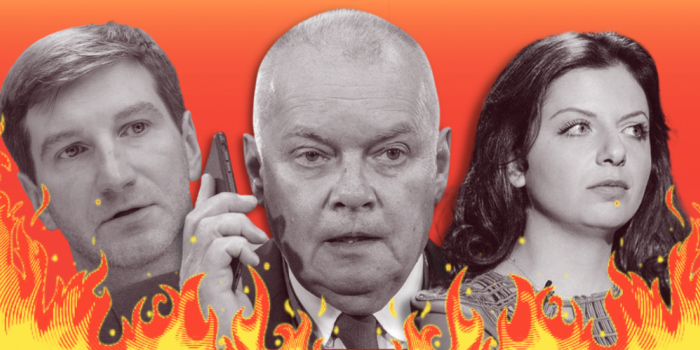The Russian government plans to allocate a record 137.2 billion rubles ($1.4 billion) for state media and propaganda in 2025, according to a draft budget document published in the State Duma database. This marks a 13% increase from the current year's spending.
Russian propaganda justifies the invasion of Ukraine as a defense against “Western aggression” and alleged threats to Russian-speaking populations in Ukraine. This narrative distorts facts, spreads misinformation, and portrays Ukraine as a “puppet of NATO,” aiming to erode international support for Ukraine and shape public perception domestically and abroad. Russian propagandists are accused internationally of hate crimes and inciting violence against Ukrainians.
On average, state propaganda will cost the budget 11.4 billion rubles ($118 million) per month, or 2.6 billion rubles ($27 million) per week, with state TV channels remaining the main recipients of funds, including Russia Today (RT) and the All-Russia State Television and Radio Broadcasting Company (VGTRK), according to The Moscow Times.
The budget for state media now exceeds that of several medium-sized Russian regions, including Kaliningrad Oblast and Perm Krai.
Despite this increased funding, state TV channels are experiencing a notable decline in viewership. Mediascope data shows that the combined audience share of the three major state channels - Russia 1, Channel One, and NTV - has fallen from over 34% in 2022 to 30.1% in the summer of 2024.
Channel One, which will receive a targeted subsidy of 6 billion rubles ($62 million), has been particularly affected. Since the start of the full-scale war in Ukraine, it has lost nearly a quarter of its audience, dropping to 6.8%.
The budget also includes new allocations for previously unfunded media outlets. The Regnum agency and Komsomolskaya Pravda newspaper will receive 152 million and 438.7 million rubles, respectively.
Additionally, 7 billion rubles ($72 million) have been earmarked for propaganda efforts in occupied regions of Ukraine, while 8.4 billion rubles ($87 million) are allocated for the presidential administration's media projects, particularly for online initiatives.
According to the draft budget law's explanatory note, this involves organizing "informational and explanatory support" for Vladimir Putin's initiatives "on the Internet."
The Moscow Times reports that since 2022, the Russian government has spent over 350 billion rubles on state media. This substantial investment comes when traditional state media platforms are struggling to maintain their audience in the face of changing media consumption habits and increasing competition from online sources.
The European Union imposed sanctions on Voice of Europe, a Russian propaganda outlet, along with its main figures Viktor Medvedchuk and Artem Marchevskyi. Voice of Europe, registered in Prague in 2016, was accused of spreading propaganda, bribing European politicians, and trying to influence the European Parliament elections.
In September, a hack exposed the Social Design Agency (SDA), a Kremlin-linked troll organization producing 40,000 propaganda pieces online in just four months. Overseen by Sergei Kiriyenko from Putin's office, SDA targeted Western audiences, including Germany, Italy, and France, aiming to discredit Ukraine and influence European elections.
Related:
- From Putin’s office to your timeline: hack exposes new Russian troll army
- Russian propaganda falsely claims Ukrainian involvement in terrorist training in Syria
- Ukrainian MPs urge Canada to block screening of Russian propaganda film at Toronto festival
- Poland launches a multi-nation initiative to combat Russian propaganda
- “Biolabs” and “persecution of Christians”: GOP Congresswoman spreads Russian propaganda to oppose Ukraine aid bill

